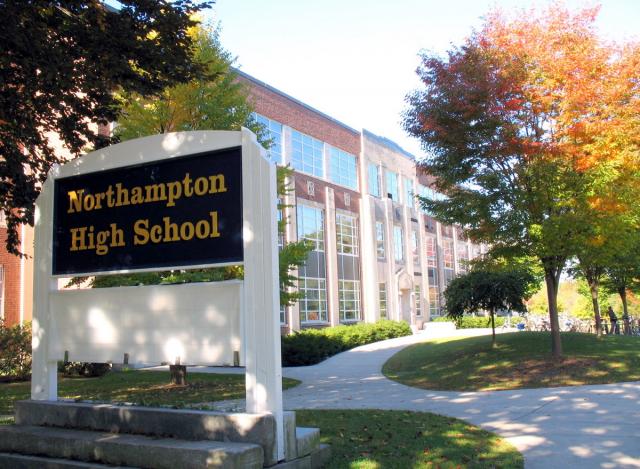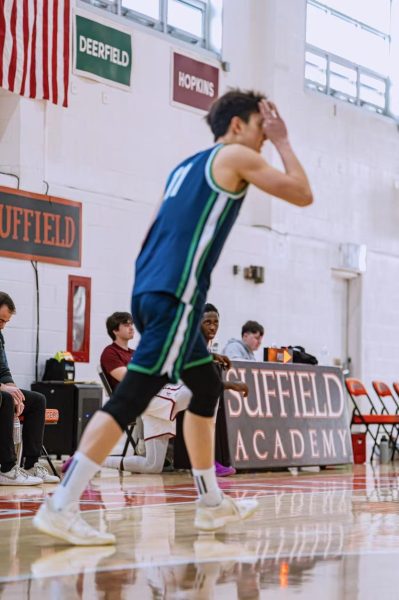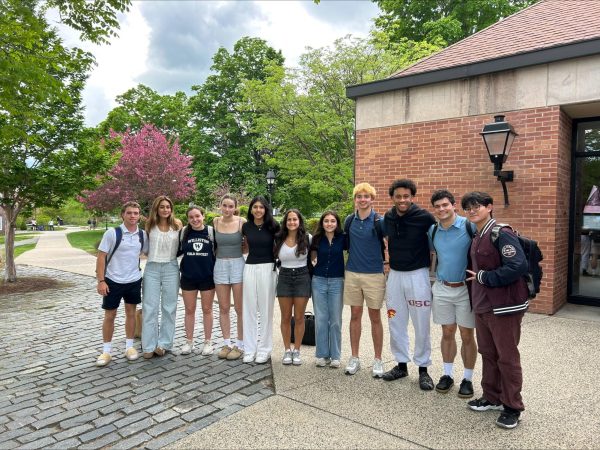Northampton Pricipal Suspended Amid Scandal
A debate has ensued at Northampton High School in past weeks after the school’s principal made an abrupt decision to eliminate the school’s honors math program, replacing it with an integrated, “embedded” math curriculum.
Causing outcry from students and parents alike, the decision to make significant changes to the school’s math program was made by principal Lori Vaillancourt, who cited issues relating to “equity” as explanation for the abrupt shift.
Students recently staged a walk-out in protest of Vaillancourt’s decision, and more broadly for a history of what they consider to be questionable behavior by the principal. It was recently discovered that Vaillancourt referred to students as “asshats” in private email communication from March 2021, after they had requested to meet with her to discuss the decision.
Although discussions about implementing an embedded math program at the school have been ongoing for the past few years, Vaillancourt’s decision to combine honors and non-honors math classes has caused concern due to how hastily the change was made.
In addition to being criticized by students, the program has also received disapproval from within the school’s administration. In October, a former School Committee member named Susan Voss wrote a seven-page page report, criticizing the switch from standalone honors math classes to embedded classes, according to the Daily Hampshire Gazette.
This debate is one of many to emerge recently, as some schools have made the decision to alter long-standing elements of their curriculum, including honors classes, AP classes, and offerings for high-performing students known as “gifted and talented programs.”
Some fear that such programs, which are based on merit and personal achievement, could unfairly aid some students, while allowing other students’ talent to go unnoticed.
“We have found that there are a lot of students just slipping through the cracks, because teachers didn’t think to nominate them [for the gifted and talented program],” said Carol Dallas, the gifted education coordinator for the public school system in Aurora, Colorado.
In a column submitted to the Gazette, three math teachers at Northampton High School, all of whom support embedded honors, explained how the program will help students gain confidence.
“Embedded honors is, in part, about helping students move from a ‘fixed mindset’ … to a ‘growth’ mindset,” the teachers wrote. “By … being in mixed classes, students may see more challenging math work and discover they are ready for … that challenge.”
Many at the school, however, question whether embedded honors will help students improve in math—some even believe it could do the opposite.
A freshman at Northampton High School who wishes to remain anonymous believes students would be able to improve if they were placed in classes with people who share similar learning needs.
“Is the point of embedded honors about getting better education for those who need it? Because if that were the case, then they should just have different groups,” the student explained.
“Everyone who needs more assistance can be in one group, and if there are people who want more challenging work, then they should be in a group where they can get more challenging work.”
“Having those two groups of people together doesn’t really make sense, because either way you slice it, you’re taking away from the group that needs more time or energy, and no one really benefits in the end,” he said.
The student also believes that more members of the school community would be able to get behind the switch to embedded honors if the administration had been more transparent about its intentions.
“We don’t know a lot about this, which is partly why it’s not very popular,” he said. “In our eyes, it’s something that we didn’t even know about and was forced upon us. We had no idea what was happening, and now this is how it’s going to be for the rest of our high school careers.”
Susan Voss, the former School Committee member who wrote the report criticizing Vaillancourt’s decision, had similar concerns.
“The public had no opportunity or awareness that this change was happening, to come speak, and many of the community members probably didn’t realize the extent of this change because they don’t have kids in the high school yet,” Voss explained. “Numerous students and caregivers had real concerns.”
Olin Rose-Bardawil is a senior from Northampton, MA who has written for the Willistonian since 2021 and has served as its editor-in-chief since 2023. In...














Ray DeMeo • May 17, 2022 at 9:24 AM
Nice job on this article. Very well written and does a better job of explaining the issue around embedded math classes than the coverage I have read in the Gazette and Mass Live. Also good to have thoughtful insights from a student. Again, excellent job all around.